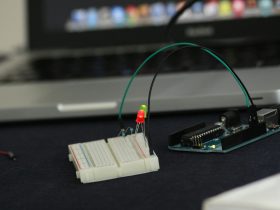
ABSTRACT
The main objective of this paper is to explain the design methodology which has
been opted for the suspension system of an All Terrain Vehicle .Double wishbone
independent suspension system is designed for the front half and trailing arm
independent suspension is designed for the rear half. All the calculations which are
required have been discussed. The analysis of the suspension system is also done by
using simulation software Lotus shark.
Key words:
Suspension system; All terrain vehicle; ATV
1. INTRODUCTION
There are different types of suspension system which can be used for a vehicle depending
upon our need. Basically suspension can be classified into 2 types:
.Independent suspension
.Dependent suspension
1) Independent Suspension : The term independent indicates that suspension system for both
the wheels are independent of one another i.e., whenever a bump or droop comes across ,both
the wheels behave independently. To put it up in simple terms the wheel travel ( movement of
wheel up and down in vertical direction) can be seen only on that side where the wheel
undergoes bump or droop. Where as the other wheel maintains contact with the road.
Examples of independent suspension :
i) Double wishbone
ii) Mc person struct
iii) Swing arm
2) Dependent Suspension : In this type suspension if one wheel undergoes a wheel travel
due to bump or droop the opposite wheel also undergoes the wheel travel, Unlike the
independent suspension.
Example of dependent suspension :
i) leaf spring
ii) live axle
For an all terrain vehicle where the vehicle is made to run at different uneven terrains it is
always better to opt for independent suspension system rather than dependent suspension. Of
all the independent suspension systems available by studying the merits and demerits of each
and every type, double wishbone and trailing arm suspension have been preferred for front
and rear respectively.
The main functions of the suspension system in vehicle are:
i) To maintain traction between the tires and ground
ii) To improve vehicle handling
iii) To provide a ride comfort to the passengers







Leave a Reply